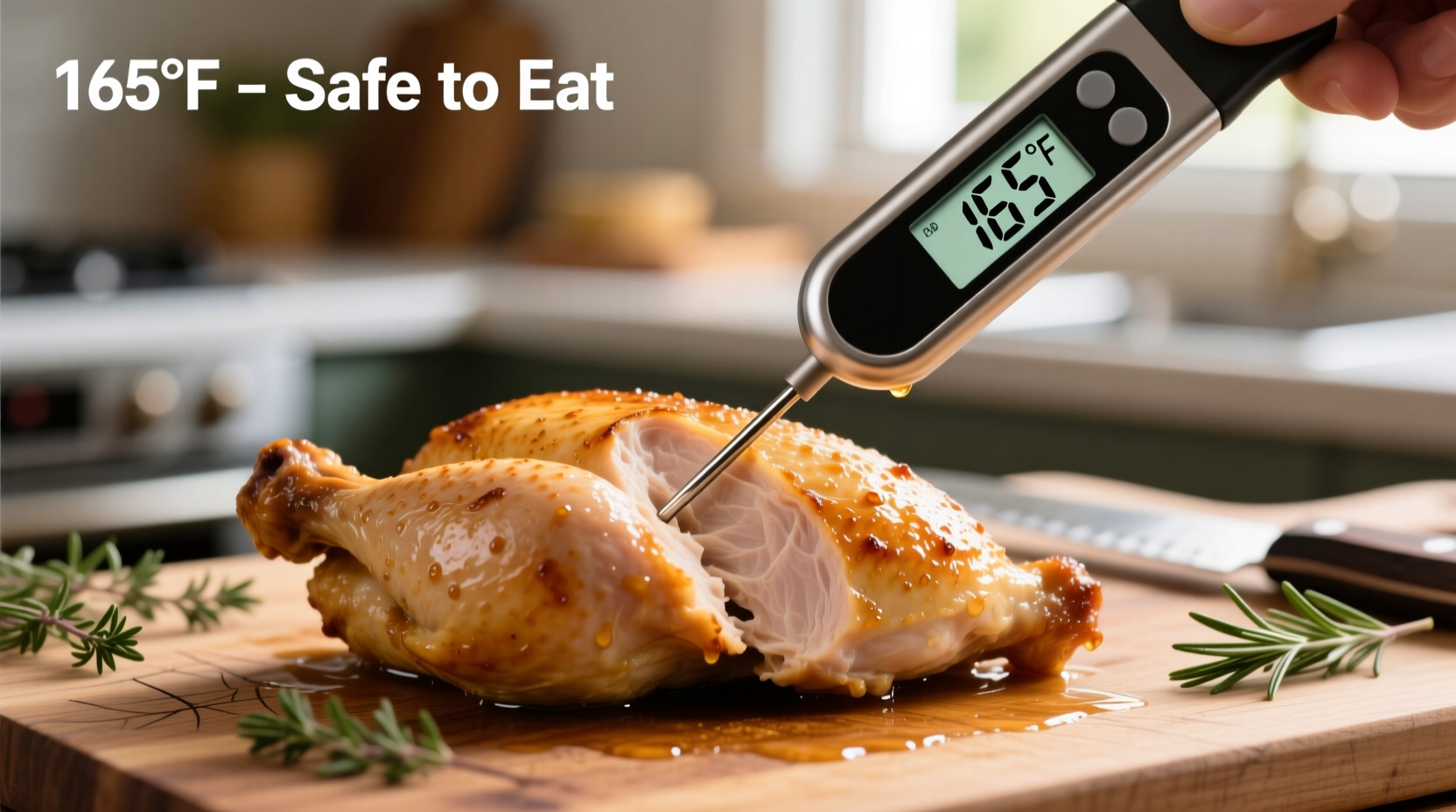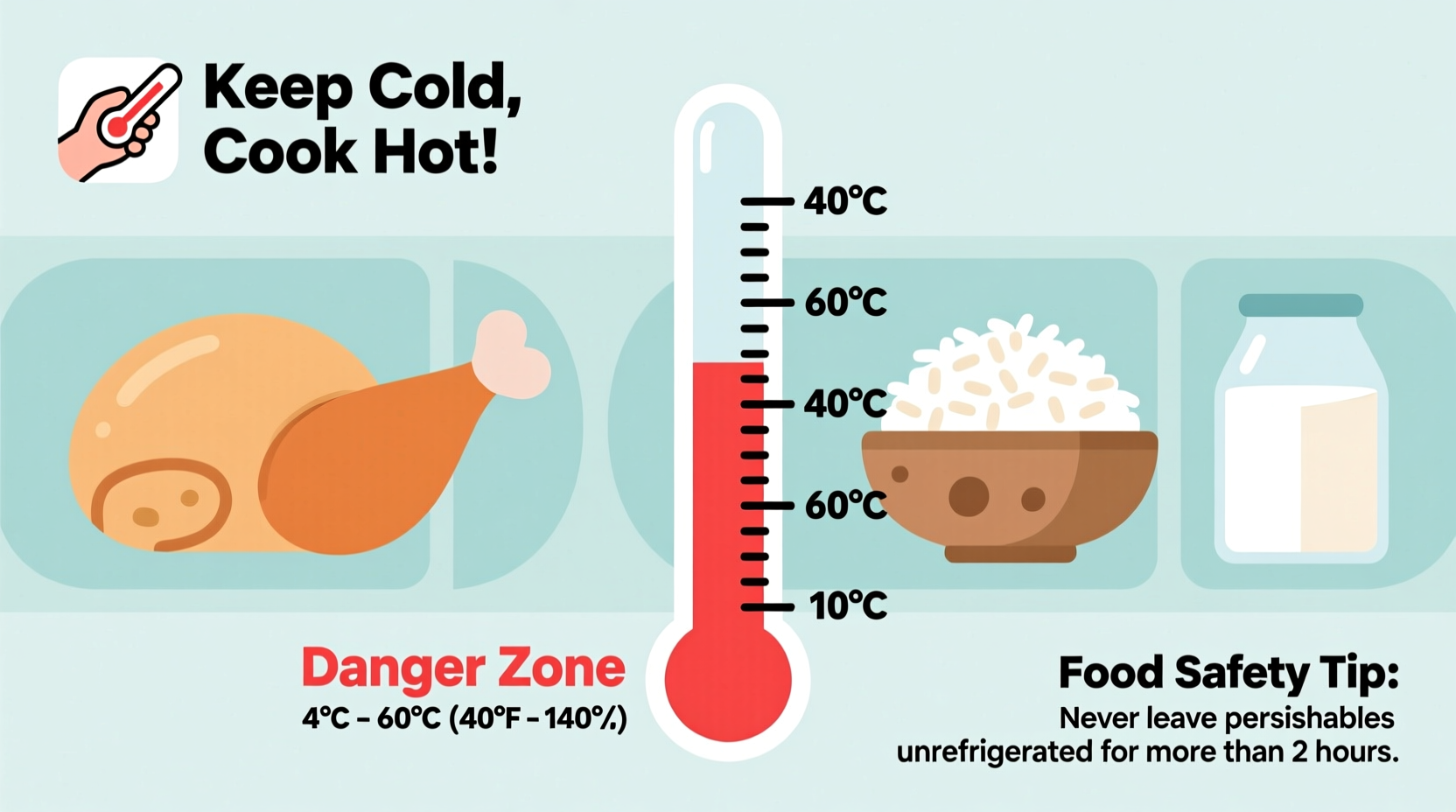The food danger zone temperatures refer to the range between 40°F (4°C) and 140°F (60°C), where harmful bacteria multiply rapidly, potentially causing foodborne illness. Food should not remain in this temperature range for more than 2 hours (or 1 hour if ambient temperature exceeds 90°F/32°C). Understanding and avoiding the danger zone is critical for food safety in both home and commercial kitchens.
Every time you prepare a meal, you're engaged in a delicate balancing act between flavor and safety. The food danger zone represents one of the most critical food safety concepts that separates enjoyable meals from potential health emergencies. Whether you're grilling burgers at a summer barbecue, storing leftovers, or preparing food for a large gathering, understanding temperature danger zones could prevent serious illness for you and your loved ones.
Why the Food Danger Zone Matters for Your Health
Within the danger zone temperature range, bacteria like Salmonella, E. coli, and Listeria can double in number every 20 minutes under ideal conditions. The USDA Food Safety and Inspection Service confirms that "pathogenic bacteria grow most rapidly between 40°F and 140°F, a range that's often called the 'danger zone.'" (USDA FSIS) This exponential growth means that seemingly harmless food left at room temperature can become dangerously contaminated in just a few hours.

Scientific Basis: How Bacteria Multiply in the Danger Zone
The danger zone isn't arbitrary—it's based on decades of food microbiology research. Most pathogenic bacteria require specific conditions to thrive, with temperature being the most controllable factor in food preparation. When food sits between 40°F and 140°F:
- Bacterial metabolism accelerates significantly compared to refrigerated temperatures
- Enzymatic reactions that support bacterial reproduction occur at optimal rates
- Moisture in food remains available rather than being frozen or evaporated
- pH levels in many foods become more hospitable to bacterial growth
The FDA Food Code specifically identifies this temperature range as requiring time and temperature controls for safety (TCS) foods. These include meat, poultry, fish, eggs, dairy products, cut fruits and vegetables, and cooked starches.
Complete Food Danger Zone Temperature Reference Guide
| Temperature Range | Bacterial Activity | Safe Handling Guidelines |
|---|---|---|
| Below 40°F (4°C) | Most bacteria growth slows significantly; some pathogens still grow slowly | Refrigerate promptly; maintain refrigerator at 40°F or below |
| 40°F-140°F (4°C-60°C) | Rapid multiplication of pathogens; doubles every 20 minutes | Limit exposure to 2 hours maximum (1 hour if above 90°F) |
| 140°F-165°F (60°C-74°C) | Bacteria begin to die; higher temperatures kill faster | Hold hot foods at 140°F+; cook to required internal temperatures |
| Above 165°F (74°C) | Most pathogens destroyed within minutes | Required for certain foods like poultry and stuffed meats |
Time Limits Within the Danger Zone: Critical Safety Thresholds
Time matters as much as temperature when preventing foodborne illness. The standard safety guideline states that food should not remain in the danger zone for more than:
- 2 hours - When ambient temperature is below 90°F (32°C)
- 1 hour - When ambient temperature is 90°F (32°C) or higher
This time limit includes all cumulative exposure—during preparation, serving, and storage. For example, if you leave food out for 45 minutes while preparing a meal, then serve it for 60 minutes, you've already used nearly the entire safe window.
Special Considerations for Different Food Types
While the standard danger zone applies broadly, certain foods have specific considerations:
- Poultry and stuffed meats require cooking to 165°F (74°C) to ensure safety throughout
- Ground meats need higher temperatures (160°F/71°C) due to increased surface area
- Fish and seafood should reach 145°F (63°C) or become flaky
- Leftovers and casseroles must be reheated to 165°F (74°C)
- Raw eggs in recipes should be avoided unless pasteurized
The CDC reports that each year, 1 in 6 Americans (48 million people) get sick from foodborne diseases, resulting in 128,000 hospitalizations and 3,000 deaths. (CDC Foodborne Diseases) Proper temperature control could prevent many of these cases.
Practical Strategies to Keep Food Out of the Danger Zone
Implement these evidence-based techniques to maintain food safety:
During Food Preparation
- Keep cold ingredients refrigerated until ready to use
- Use separate cutting boards for raw meats and produce
- Don't thaw food at room temperature—use refrigerator, cold water, or microwave methods
- Prepare cold dishes just before serving
During Serving
- Use chafing dishes, slow cookers, or warming trays to maintain hot foods above 140°F
- Place cold foods in bowls nestled in ice
- Discard perishable foods left out longer than the time limits
- Use small serving platters and replenish from refrigerated reserves
During Storage
- Cool leftovers rapidly by dividing into shallow containers
- Refrigerate leftovers within 2 hours of cooking (1 hour if hot)
- Use a refrigerator thermometer to verify temperature (should be 40°F or below)
- Follow the "two-hour rule" for takeout and delivered foods
Common Misconceptions About the Food Danger Zone
Several myths persist about food safety temperatures that could put you at risk:
- "If it smells fine, it's safe to eat" - Many dangerous bacteria don't affect odor or appearance
- "Reheating will make unsafe food safe" - Some bacteria produce heat-stable toxins that survive cooking
- "The danger zone only matters for meat" - Dairy, eggs, cooked vegetables, and cut fruits also require temperature control
- "Room temperature is fine for short periods" - Bacteria begin multiplying immediately within the danger zone
Essential Tools for Monitoring Food Temperatures
Invest in these tools to ensure food safety:
- Digital instant-read thermometer - Provides accurate readings in seconds
- Refrigerator/freezer thermometer - Verifies appliance temperatures
- Cooler thermometer - For monitoring food during transport
- Thermal food containers - Maintain safe temperatures during transport
Regular calibration of thermometers is essential—test them periodically in ice water (should read 32°F/0°C) and boiling water (212°F/100°C at sea level).
Special Situations: Tailgating, Picnics, and Outdoor Events
Outdoor food safety requires extra precautions:
- Pack perishable items last and keep coolers closed as much as possible
- Use block ice instead of cubed ice for longer cooling
- Keep coolers in shaded areas and consider reflective covers
- Bring separate coolers for beverages and food to minimize opening
- Use frozen water bottles as ice packs that gradually melt for drinking water
The FDA emphasizes that "at outdoor events, the danger zone threat increases because you don't have the convenience of a refrigerator or a temperature-controlled environment." (FDA Summer Food Safety)
Food Safety Timeline: Evolution of Danger Zone Understanding
Our understanding of food danger zones has evolved significantly:
- 1860s - Louis Pasteur demonstrates the relationship between temperature and microbial growth
- 1920s - Refrigeration becomes more widely available in homes
- 1963 - First FDA Food Code establishes basic temperature guidelines
- 1993 - Modern danger zone concept (40°F-140°F) becomes standard
- 2013 - FDA Food Code updates to 41°F-135°F for certain commercial applications
- Present - Smart thermometers and temperature monitoring apps enhance home food safety
While commercial kitchens now often use 41°F-135°F as their danger zone parameters, the 40°F-140°F range remains the standard recommendation for home food safety due to thermometer accuracy limitations in household settings.
When the Danger Zone Rules Have Exceptions
Certain food preparation methods operate intentionally within or near the danger zone under controlled conditions:
- Sourdough fermentation - Requires specific temperature ranges for optimal yeast activity
- Dry curing meats - Uses salt, time, and controlled humidity rather than temperature alone
- Cheese aging - Occurs at carefully monitored temperatures just above refrigeration
- Sous vide cooking - Uses precise temperature control below traditional cooking temperatures
These specialized techniques require specific knowledge and equipment—don't attempt them without proper guidance from authoritative sources.
Food Safety Resources from Authoritative Organizations
For the most current food safety information, consult these trusted sources:
- USDA Food Safety and Inspection Service: www.fsis.usda.gov
- FDA Food Code Resources: www.fda.gov/food-code
- CDC Food Safety Information: www.cdc.gov/foodsafety
- FoodSafety.gov: www.foodsafety.gov
Implementing Food Danger Zone Knowledge in Your Kitchen
Start applying this knowledge today with these practical steps:
- Check your refrigerator temperature with a reliable thermometer
- Invest in an instant-read food thermometer if you don't have one
- Create a food safety checklist for your kitchen
- Review safe minimum cooking temperatures for common foods
- Establish a system for tracking time when food is out of temperature control
Remember that food safety is cumulative—each precaution you take builds a stronger defense against foodborne illness. The food danger zone temperatures represent one of the most fundamental food safety concepts, but understanding alone isn't enough. Consistent application of these principles protects you and those you feed.











 浙公网安备
33010002000092号
浙公网安备
33010002000092号 浙B2-20120091-4
浙B2-20120091-4